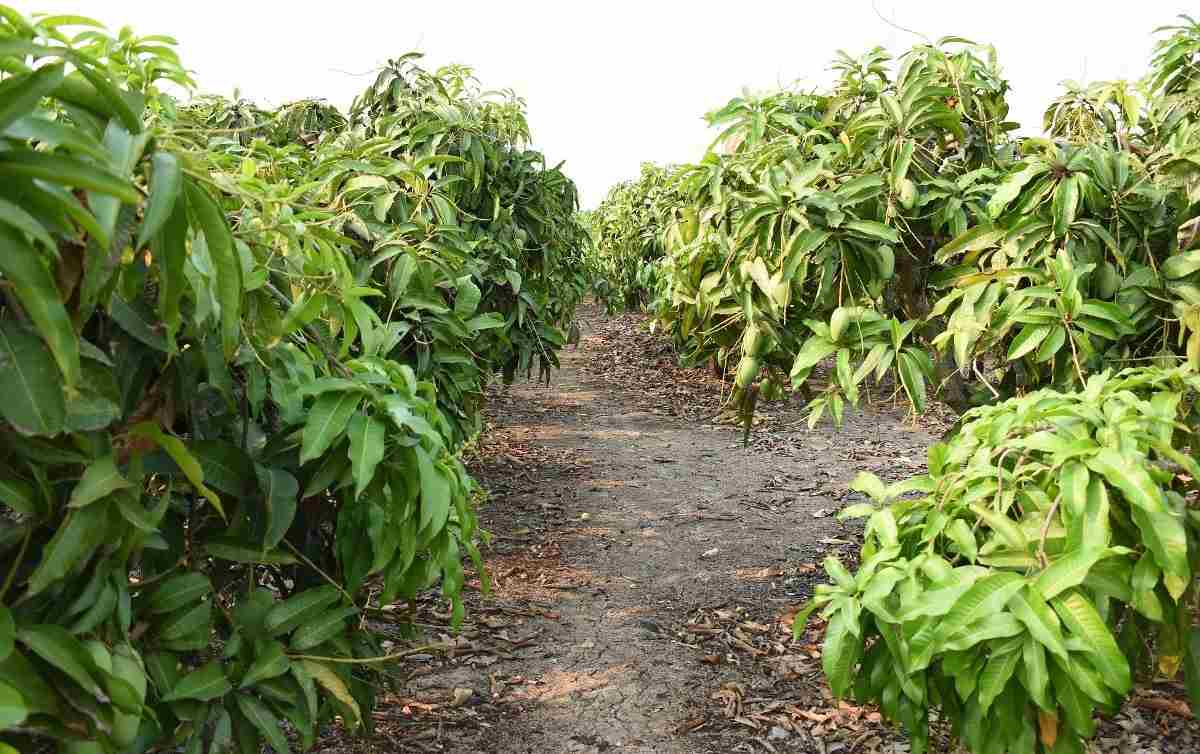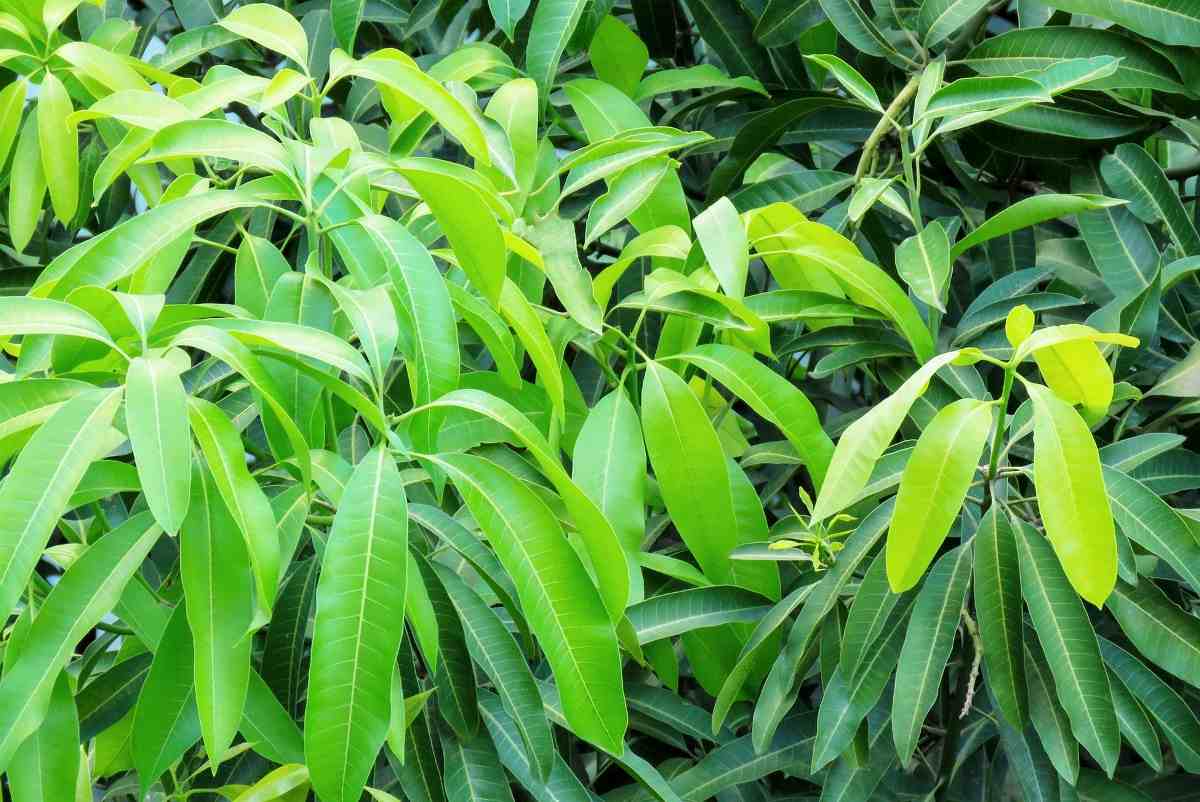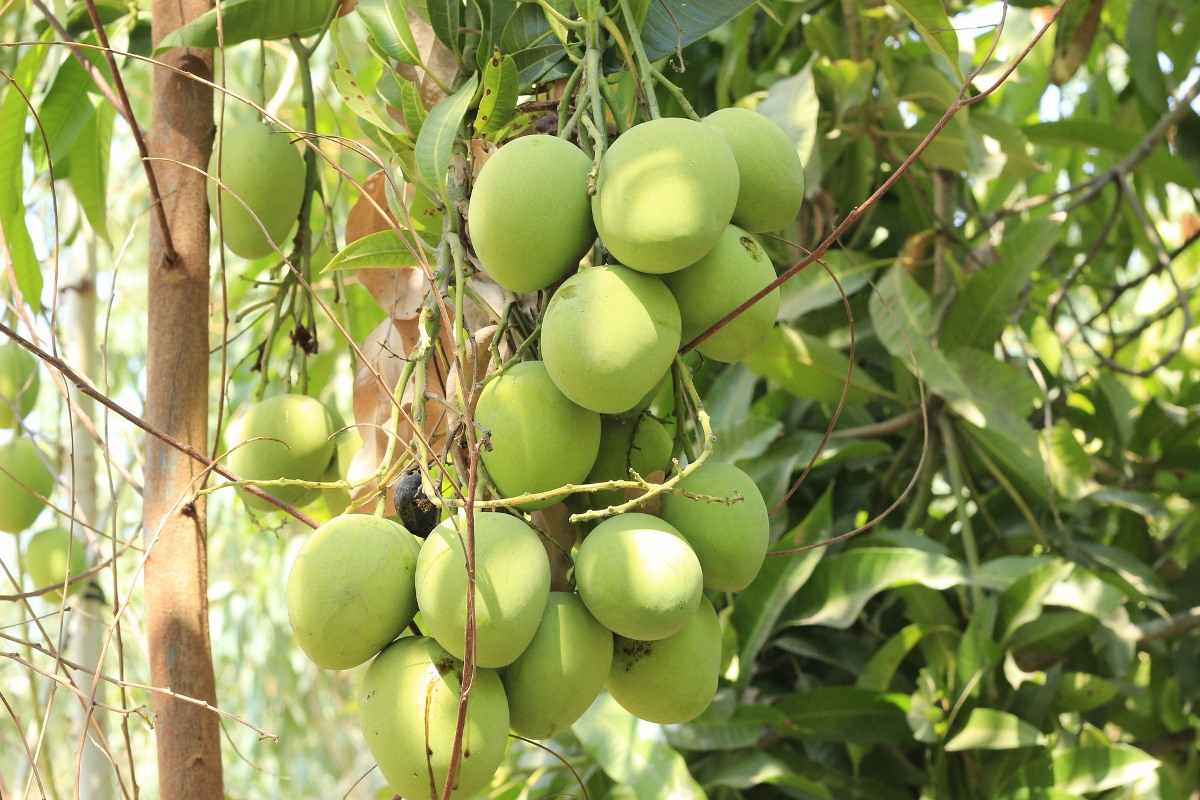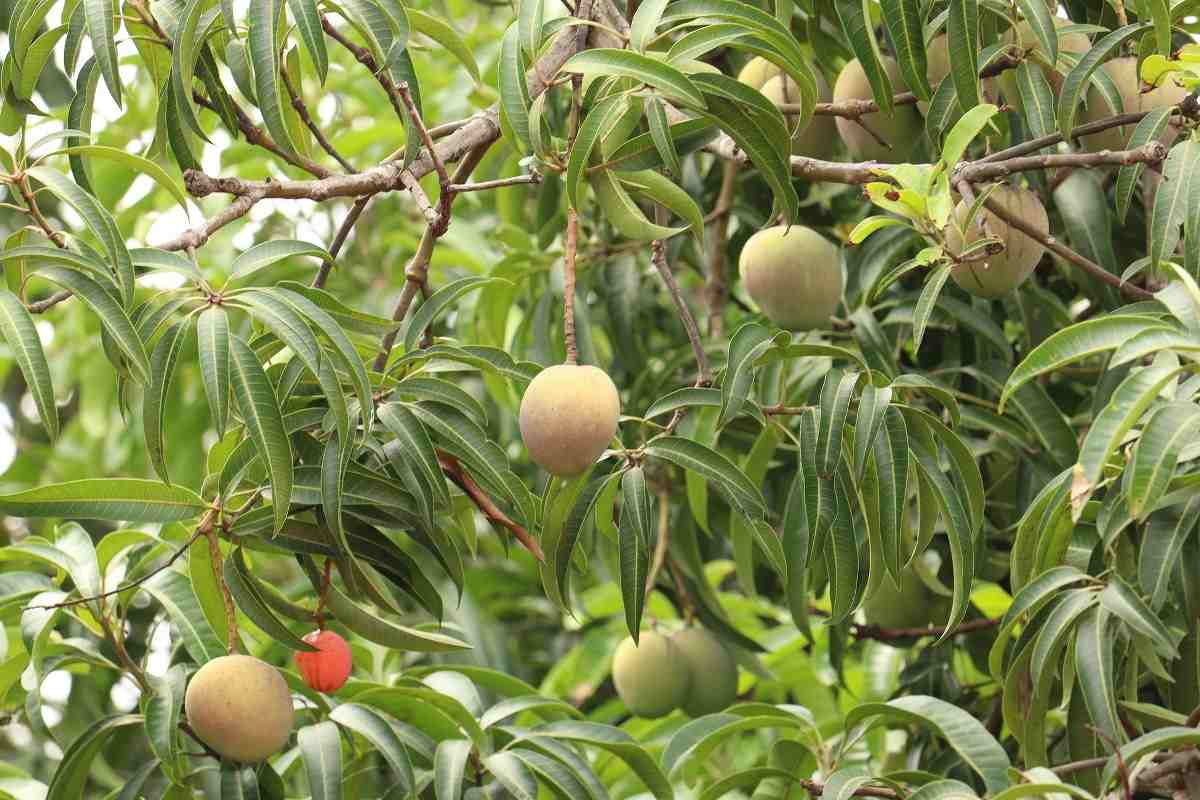Introduction to High Density Mango Plantation
Mango is an evergreen tree in the family Anacardiaceae has grown for its edible fruit and it is one of the most important cultivated fruits of the tropical world. The botanical name of Mango is Mangifera indica. The leaves of the Mango tree are shiny and dark green. They are elliptical or lanceolate with long petioles and a leathery texture. The fruit is roughly oval, with uneven sides. India contributes about 60% that means 9.5 million tonnes in the world Mango production (15.7 million tonnes). Mango contributes about 40% of national fruit production (22.168 million tonnes). The principle of HDP;
- Firstly, to make the best use of vertical and horizontal space and
- To harness maximum possible returns per unit of inputs and some resources.
Mango comes first among the top-rated delicious fruits; farmers are used to getting considerable income. Andhra Pradesh, Uttar Pradesh, Maharashtra, Karnataka, Tamilnadu, Bihar, and Gujrat are the important Mango producing states in India. In recent years, High Density planting system in Mango trees is becoming popular among investors due to their high yielding potential. Because of great utility, the Mango tree occupied a pre-eminent place amongst the fruit crops grown in India. India produces the world’s largest tonnage of Mango.
A Step-by-Step Guide to High Density Mango Plantation in India

HDP technology is one of the improved production technologies to achieve the objective of;
- Enhanced productivity of fruit crops.
- Yield and quality of the produce.
- It mainly aims to achieve the twin requisites of productivity by maintaining a balance between vegetative and reproductive load.
Advantages of High Density Mango Plantation
- It increases yield and improves fruit quality.
- It reduces labor cost resulting in low cost of production.
- Enables the mechanization of fruit crop production.
- Facilitates more efficient use of fertilizers, water, solar radiation, fungicides, and weedicides.
- Best utilization of land and resources.
- Quality production of fruit crops.
- Increase in yield per unit area.
- Easy for intercultural, plant protection, and harvesting.
- Obtain export quality of the harvest.
- It is profitable compared to traditional Mango cultivation
- Requires proper fertigation and irrigation, preferably drip.
- More maintenance than traditional Mango cultivation.
- Better yield.
- Easy to harvest as tree height is controlled.
- Less labor-intensive
- Good sunlight and air penetration
- Better fruits (quality and quantity)
Components of High Density Planting

The components of High Density planting are;
- Use of dwarf scion varieties.
- Adopting dwarfing rootstock and inter-stocks.
- Efficient training and pruning.
- Use of plant growth regulating chemicals.
- Suitable crop management practices.
In the Mango plantation,
Amrapali at 2.5x 2.5 m in triangular system accommodation of 1600 plants
Dashehari at 3.0 X 2.5 m in square system accommodation of 1333 plants per hectare
In Amrapali, the increase in yield per hectare was 2.5 times that of the low-density planting. In Dashehari, the average yield in HDP is about 9.6 tonnes.
This yield can be improved in alternate bearing cultivars such as Dashehari, Chausa, and Bombay Green through the application of growth retardants like Paclobutrazol.
Conditions for High Density Mango Farming
- Economical Aquaculture: A Guide to Low-Budget Fish Farming
- 15 Common Planting Errors That Can Doom Your Fruit Trees
- How to Make Houseplants Bushy: Effective Tips and Ideas
- Innovative Strategies for Boosting Coconut Pollination and Yield
- Pollination Strategies for Maximum Pumpkin Yield
- The Complete Guide to Chicken Fattening: Strategies for Maximum Growth
- Natural Solutions for Tulip Problems: 100% Effective Remedies for Leaf and Bulb-Related Issues
- Revolutionizing Citrus Preservation: Towards a Healthier, Greener Future
- Natural Solutions for Peony Leaf and Flower Problems: 100% Effective Remedies

- High Density planting and ultra-high density planting systems are becoming popular in many crops in India. Adoption of High Density Planting (HDP) with proper canopy management practices coupled with the drip-fertigation system is highly essential to increase productivity. Usually, a High Density Mango plantation makes maximum use of land to achieve high yields in the early periods of the orchard along with ease in its management.
- In the High Density method, yields are improved in the early years of orchard life.
- Once the trees have filled their allotted spaces, crowding can occur and canopies of an adjacent tree begin to overlap. In fact, at some point in time, most fruit trees need to be controlled vegetative growth, particularly in High Density planting.
- Generally, High Density Mango plantation is not dependent on the variety of Mangoes. That means Farmers should concentrate on high yielding varieties and varieties which have a good market value for High Density plantation. Kesar, Alphonso, Banganappalli, and Malliga are some of the most valued Mango fruits with a good return on investment. Imam Pasand is a low yield Mango variety with a high cost and can be considered for High Density plantation. Low-cost Mangoes which generally go for pulp and pickles must be avoided. For example, Totapuri is a high-yield Mango variety but the cost for the variety is low in the market.
- High Density Mango plantation comes with its caveats. Maintenance is higher than the traditional farming systems. Drip irrigation, proper field maintenance, and pest management costs are to be considered in this system. Pruning the Mango trees 3 to 4 times a year is required to maintain the proper shape of the plant.
- Some of the horticultural methods known to control tree growth are training and pruning. Proper tree forms, branch angle, and limb spacing aid in growth control.
- Once the Mango tree is mature, excessive growth can be regularly removed by pruning the tree.
Ultra-High Density Mango Plantation
Ultra-high density plantation (UHDP) is increasingly developed being used for Mango plantations across the globe. UHDP can yield up to 200% more crop than the traditional method of cultivation. This system ensures optimal utilization of all resources while increasing the production per unit area. This ensures a uniform shape and color of the fruit while maintaining its flavor and freshness. The increase in this production leads to higher exports as well. Then, this means more profit margins for the farmers which goes a long way in addressing the need for farmers’ welfare by improving their economic status.
Mango trees are grown in rows at a distance of about 4×2 meters from one another in ultra-high density farming. The spacing is 4 meters between rows and 2 meters between Mango plants. Whereas, traditional Mango plantations have a spacing of about 10×10 meters is required. The yield is way higher in ultra-High Density plantations due to the tight spacing of plants as compared to the traditional method of plantations. The average yield of Mangoes in traditional plantations is 2.5 to 3 tonnes per acre per year. The yield of ultra-High Density Mango plantations, this average increases to 9 to 10 acres per acre per year. The trees are short because they are pruned every year after harvest, which happens in April and May. The pruning targets branches that won’t bear Mango fruits.
Mango Varieties Suitable for Ultra-High Density Planting
| State | Varieties |
| Andhra Pradesh | Alphonso, Banganapalli, Totapuri, and Mallika |
| Bihar | Bombai, Himsagar, Langra, and Chausa |
| Goa | Fernandin, Mankurad |
| Gujarat | Alphonso, Kesar |
| Karnataka | Alphonso, Bangalora, Neelum, and Mallika |
| Madhya Pradesh | Alphonso, Kesar, Ratna |
| Tamil Nadu | Alphonso, Banganapalli, Imampasand, and Totapuri |
| Uttar Pradesh | Bombay Green, Dashehari, Langra, Lucknow Safeda, Mallika, and Chausa |
Process of Ultra-High Density Plantation (UHDP) in Mango
- Ultra-High Density Plantation in Mango has brought about a revolution in size and the way Mango is grown.
- In conventional ways of cultivation, a Mango tree grows up to about 100 feet tall. By regular pruning, UDHP ensures that the tree does not grow beyond 7 feet in height.
- UHDP leads to Mango orchards attaining their full potential in 3 to 4 years. This is in contrast to the 7 to 8 years taken by traditional methods of cultivation.
- The UDHP requires Mango grafts of commercial varieties to be planted close to each other. Approximately 700 trees are planted in an acre instead of the traditional process of planting 60 trees in an acre.
- UHDP system, while improving per acre productivity, simultaneously reduces the usage of water. Then, this leads to optimal use of the resource.
- Irrigation is critical after pruning and during fruition in ultra-high density fruit orchards. Drip irrigation ensures effective water management.
- Along with the UHDP technique, unique methods of pruning, fertigation, and irrigation lead to the balanced growth of Mango orchards.
High Density Mango Plantation Vs Traditional Mango Plantation
High Density Mango plantation is doubled that of traditional Mango plantation. But when it comes to crop yield, it is double too. For the first 4 years of the gestation period, the cost of maintaining a High Density farm approximately 1,03,940 rupees with 1 acre of land, while the cost of maintaining a traditional farm is 63,345 rupees only. When it comes to returns, in a traditional farm you can get 2 to 3 tonnes per acre while you can expect 6 tonnes in High density. In monetary terms, you are looking at 50,000 Rs in returns on a traditional farm though the returns on the High Density farm are 1,50,000 on the 5th year per acre. High Density Mango plantations are more profitable than Traditional Mango plantation.
Difference Between High Density, Traditional, and Ultra-High Density Mango Plantation
| Traditional | High Density | UHDP | |
| Yield | 2.5 tonnes/acre | 5 tonnes/acre | 10 tonnes/acre |
| Maintenance | Moderate | Slightly higher | High |
| Plant per acre | 60 | 200 | 700 |
| Harvesting cost | High | Low | Low |
| Fruit quality | Low | Moderate/High | High |
| Learning curve | Low | High | High |
| Return on investment | Low | High | Very high |
Planting Density in Mango Plantation
Generally, the veneer grafted Dashehari plants prepared on seedling rootstock at 2 densities like 12m x 12m (69 plants/ha-normal density) and 2.5m x 3.0 (1333 plants/ha-high density).
Approximately 216 grafts were planted in High Density plantations employing the 0.162-hectare area for each density. In High Density plantation, grafts were planted directly in soil mixed with fertilizers containing 100g N, 75 g P2O5, and 75 g K2O fertilizer mixture.
Planting Distance for High Density Mango Plantation
Rectangular with single, double, or three rows are;
- Single row – row spacing is wide: 4 x 2m
- Double row – Wider spacing: (4+2) x 2m
- Three row – More wider spacing: (4+2+2) x 2m
In many parts of India, Mango orchards are being established at closer than conventional spacing. After 10 to 11 years, ¾ of the canopy of trees in the HDP needs to be dehorned to present interlocking of branches.
Establishing HDP plantations varying planting distances are adopted, and their performance is different at different localities. Then, the choice of appropriate spacing for HDP Mango planting depends upon the spread of the plants in a particular locality and under particular management conditions. The spacing to be adopted depends upon the below factors;
- The climate of the locality
- Variety under plantation
- Growing conditions (irrigated/ Rain-fed )
- Canopy management practices
- The intensity of other management practices
Among the above-mentioned factors, the climate of locality plays a major role in deciding the spacing in HDP. Under such conditions more plants can be accommodated by adopting spacing like 6 x 2 meters, 6 x 3 meters, or even 4 x 2 meters. Naturally, the canopy spread is more vigorous, and narrow spacing cannot be adopted.
Training and Pruning Requirements in High Density Mango Plantation
- Pruning -dwarfing effect on the Mango tree.
- Slow-growing trees respond favorably to pruning and training and can be maintained at a given size and shape without sacrificing yield.
- Tree size control through pruning.
- In a High Density system, crop yields are improved in the early years of orchard life.
- This can lead to excessive shading and reduction in photosynthesis by layered leaves within the tree canopy resulting in poor yields.
- The major principle of High Density planting is the control of excessive vegetative growth in the tree for increased productivity. So, controlling tree size by dwarfing rootstocks in High Density orchards is one of the methods of increasing production.
- Canopy management is necessary for a High Density planting system to control tree size and also to strike a balance between vigor and productivity. It starts in the early months of planting.
- When the plant height reaches about 45 to 60 cm, the terminal bud must be pinched at 5 to 6 cm below the apex to encourage the growth of auxiliary buds. After the growth from auxiliary buds about 2 to 3 vigorous shoots are to be retained in different directions at 15 to 20 cm interval which will develop as primary branches. After 4 to 6 months of growth of primary branches, they should be headed back at 45-60 cm length to allow further growth of about 4-5 secondary shoots on each branch, and which in turn will form tertiary shoots in due course.
Pests and Diseases Management in Mango Trees
Powdery Mildew – One of the biggest diseases in Mangoes is Powdery mildew. Symptoms include powdery fungal growth on leaves and stalks. The fungus will affect flowering and fruit set in Mango trees.
Red Rust – As the name suggests leaves a reddish-brown color residue on the leaves and young twigs. The red rust diseases result in poor photosynthesis and eventually affect the foliage. The red rust can affect young tree branches. When affected on the stem, it cracks and then becomes thick. Twigs get entangled and the growth is shunted. Copper oxychloride is used to control these problems.
Pink disease – White, silk-like threads at forks of branches which coalesce to form a pink crust during wet conditions; and foliage will begin to dry out and die. Treatment is an application of an appropriate fungicide which can be applied by spraying onto infected bark with a paintbrush.
Anthracnose – Small and dark spots on flowers; infected flowers dropping from Mango tree; spots with the yellow halo on young plant leaves. Susceptible Mango varieties must be protected with fungicide in commercial production and the timing of the applications are critical to successful control; appropriate fungicide must be applied during flowering and fruit development.
Powdery mildew – symptoms of this disease are gray-white powdery growth on leaves, flowers, and fruit; curled, distorted shoots; fruit dropping from the tree. Fungicides are very effective at controlling powdery mildew if applied at the first sign of the disease; chemical sprays need to be applied at flowering and fruit set.
Fruit fly – The adult female flies lay an egg just under the skin of semi-repine fruits. The maggots develop and feed inside the fruit, causing the flesh to turn a brown color. This damage acts as an entry site for fungal and bacterial pathogens.
Disadvantages of High Density Mango Plantation
- Less life span of the fruit
- Difficult to manage the tree canopy
- Require a high level of technology for the maintenance of fruit trees
The Yield of Mango in High Density Cultivation
In case if you miss this: Dwarf Banana Farming.

Profit also depends on the variety of Mangoes. High Density farming allows up to 200 plants per acre whereas traditional Mango cultivation adopts 45 to 60 plants per acre. Then, this automatically increases the yield per tree for the first 10 years of harvest. While the traditional method generates 2.5 to 3 tonnes, the High Density Mango cultivation doubles the yield to about 5 to 6 tonnes per year.
Pls more information on banana plantation
Kindly provide us the difference between drawf scion plant & grafted plant. Can be plant grafted plant under UHDP.
If you have planted mango trees( about six months ago) using traditional methods already, can you somehow convert to high density?
12 acer mango plantation one year ago.
I am planning mango plantation in 2 acre’s, need step by step written method and fertilisers, distances, pit size. Please help me